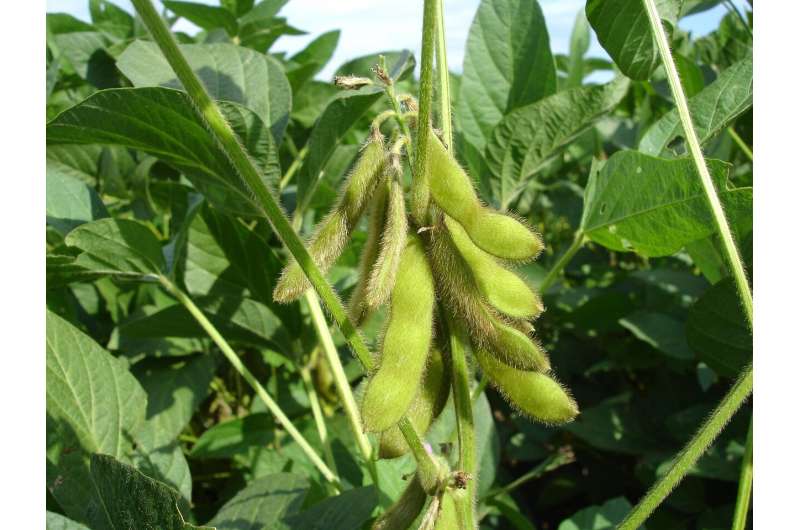Soybean study designs and implements a more effective and less toxic bio-fungicide

Fungal diseases of plants are normally managed through the application of fungicides, which are not only toxic to the pathogens that cause these diseases but to other organisms, including humans, animals, and the environment, especially after long and repeated applications. A recent article summarizes an attempt to use dsRNA molecules, which are non-toxic by themselves and present in all living organisms, to manage fungal plant diseases.
"Our research explores the potential of using dsRNA molecules (similar to the mRNA molecules used in the Pfizer and Modern vaccines) as bio-fungicides for managing fungal diseases of plants," explained Zhi-Yuan Chen, a plant pathologist at Louisiana State University Agricultural Center. "DsRNAs are not toxic to non-targeted organisms or harmful to the environment. They carry species-specific genetic information that makes them toxic only to the targeted pathogens."
As the first step in their proof-of-concept study, Marija Zivanovic, a graduate student and his advisor Dr. Zhi-Yuan Chen selected five genes from the causal agent of Cercospora Leaf Blight (CLB) in soybean and synthesized dsRNA molecules with sequences identical to those genes.
"Through modification and fine-tuning, we were able to consistently produce dsRNAs in large quantities. This production approach is considerably less expensive than the commercial methods, previously used to study fungal pathogens, and it allowed us to screen the ability of these dsRNAs to suppress cercosporin production by the pathogen," said Chen. "We found that dsRNA produced in bulk in bacterial cells can be used to suppress fungal toxin production in laboratory conditions."
DsRNA made from several fungal genes was efficient at suppressing toxin production, which is promising for further application on plants and for managing one of the most important fungal diseases of soybean in the southern U.S. The two most potent dsRNAs identified through this simple screening method are currently being tested for their ability to reduce CLB on soybean plants.
"We believe this is the first time that dsRNA was successfully used to suppress the toxin production in this major pathogen of soybean, demonstrating the potential of using dsRNA produced in bacteria to manage fungal plant diseases," Zivanovic added. "This approach can also be used to effectively manage multiple pathogens of a genus by applying dsRNA that targets the conserved genes."
Their research offers a new, economical, and potentially more effective way of managing plant diseases and increasing the sustainability of agricultural production. Unlike commercial pesticides that need to be applied in advance to degrade residue to safe levels, DsRNA could likely be applied the day before harvest with no harm to the consumer. This approach also offers a solution to reducing the development of fungicide resistance in pathogen populations.
The research was published in Phytopathology.
More information: Marija Zivanovic et al, In Vitro Screening of Various Bacterially Produced Double-Stranded RNAs for Silencing Cercospora cf. flagellaris Target Genes and Suppressing Cercosporin Production, Phytopathology (2020). DOI: 10.1094/PHYTO-09-20-0409-R
Provided by American Phytopathological Society




















